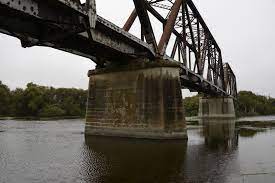Salinas River Bridge

The Salinas River Bridge, located in Monterey County, California, is a crucial piece of infrastructure that serves as a vital link in the state’s transportation network. Spanning the Salinas River, this bridge plays a significant role in connecting communities and facilitating the movement of goods and people. In this article, we will delve into the history, design, maintenance, and importance of the Salinas River Bridge.
A Brief History
The Salinas River Bridge has a rich history that dates back to its construction in 1928. Designed by renowned engineer Charles H. Purcell, the bridge was initially built to accommodate the increasing traffic flow along the historic U.S. Route 101. Over the years, the bridge has undergone several renovations and upgrades to meet the evolving transportation needs of the region.
Design and Structure
The Salinas River Bridge is an impressive example of early 20th-century bridge engineering. It features a steel truss design, which provides excellent strength and stability. The bridge spans approximately 1,200 feet and stands at a height of 150 feet above the Salinas River. Its distinctive arches and intricate lattice work make it an architectural marvel.
The bridge consists of multiple spans supported by concrete piers strategically placed along the riverbed. These piers not only provide support but also allow for the smooth flow of water during periods of heavy rainfall. The bridge’s deck is made of reinforced concrete, ensuring durability and longevity.
Maintenance and Upkeep
To ensure the safety and functionality of the Salinas River Bridge, regular maintenance and inspections are conducted by the California Department of Transportation (Caltrans). Highly skilled engineers and technicians closely monitor the bridge’s structural integrity, conducting routine checks for any signs of wear, corrosion, or damage.
Additionally, the bridge undergoes periodic seismic evaluations to assess its ability to withstand earthquakes. California is prone to seismic activity, and it is crucial for infrastructure like the Salinas River Bridge to be resilient in the face of such natural disasters.
Importance and Economic Impact
The Salinas River Bridge plays a pivotal role in facilitating commerce and travel in the region. It serves as a vital link between Monterey County and the rest of California, connecting major cities and towns along the U.S. Route 101 corridor. The bridge enables the transportation of goods, such as agricultural products, between the fertile Salinas Valley and markets throughout the state.
Moreover, the bridge serves as a crucial artery for commuters, providing a direct route for thousands of people who travel to work or visit the region’s scenic attractions. Its strategic location also supports tourism, as visitors can easily access popular destinations like the Monterey Bay Aquarium and the picturesque coastal towns along the Pacific Coast Highway.
Conclusion
Salinas River Bridge stands as a testament to the ingenuity of early 20th-century engineering and continues to be a vital link in California’s transportation network. Its historical significance, impressive design, and strategic location make it an essential piece of infrastructure that connects communities, facilitates commerce, and supports economic growth. With regular maintenance and ongoing improvements, the Salinas River Bridge will continue to serve as a critical lifeline for the region for many years to come.





